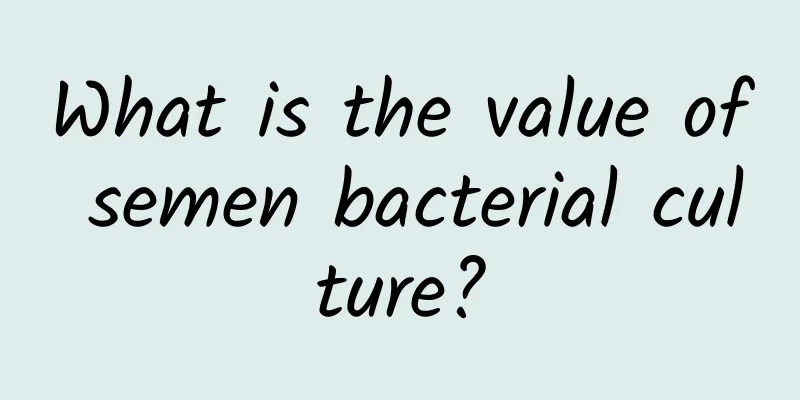There is fluid in the testicles

|
The testicles are an area in the male body that stores semen. If there is any problem with the testicles, it will harm a man's normal fertility. Testicular effusion is a congenital disease that many newborns will have. From a clinical medical perspective, testicular effusion is also called hydrocele. So when there is a problem of testicular effusion, what are the main treatment measures? (I) Hydrocele The most common type of hydrocele is testicular hydrocele. The processus vaginalis closes normally, but the testicular hydrocele cavity secretes more fluid and becomes spherical or pear-shaped. Because the testicle and epididymis are wrapped, the testicle cannot be touched during clinical examination. This disease may also be accompanied by incomplete testicular descent. (ii) Infantile hydrocele Infantile hydrocele is also called testicular hydrocele. The processus vaginalis is closed only at the inner ring, but not at the spermatic cord, and is connected to the testicular cavum vaginalis. (III) Communicating hydrocele Communicating hydrocele is also called congenital hydrocele. The processus vaginalis of the peritoneum is not closed, and the peritoneal fluid passes through the unclosed processus vaginalis to reach the testicular tunica vaginalis and flows with changes in body position. The fluid accumulated in the scrotum is peritoneal fluid, and the volume of the fluid has a significant relationship with changes in body position. There is usually groin pain at the same time, and the intestine or greater omentum enters the tunica vaginalis cavity, which is a congenital inguinal oblique hernia hydrocele. (IV) Hydrocele The two ends of the cavum vaginalis are closed, and a fluid accumulation has formed in the middle cavum vaginalis of the spermatic cord. The volume is relatively small, and there are one or more elliptical, fusiform or dumb-bell shaped lumps that grow along the spermatic cord. The normal testicle and epididymis can be touched below. If the testicle on the same side is pulled, the mass can be seen moving up and down. (V) Mixed hydrocele Mixed hydrocele refers to the coexistence of testicular and spermatic hydrocele, but the two are not connected. It may also be complicated by abnormalities such as hernia or undescended testicles. treatment Hydrocele is mainly treated surgically. Infantile hydrocele can usually be absorbed and disappear on its own and does not require treatment. If the amount of hydrocele in adults is small and there are no obvious symptoms, or if it is a reactive hydrocele caused by acute inflammation, trauma, etc., it can be treated first with a scrotal support band. The simple puncture and fluid extraction method is prone to relapse quickly and is only used for infants and young children whose effusion cannot be absorbed, and some can achieve a cure. Puncture extraction and injection of hydraulic sclerosant is suitable for non-communicating hydrocele, and has the advantages of simple method and good effect. Surgery is the main treatment for various types of hydrocele. Indications for surgery include obvious symptoms, large amount of effusion, or comorbidities and unclear diagnosis. Among surgical methods, although the tunica vaginalis window has advantages such as less trauma, less tunica vaginalis is removed, and the window can heal again, leading to recurrence. The most commonly used method is tunica vaginalis reversal, which is to cut the tunica vaginalis, aspirate the fluid, and then perform tunica vaginalis reversal. To prevent postoperative hematoma formation, the incision edge of the sheath must be carefully hemostatic, and then the sheath must be turned outward and sutured. For patients with larger tunica hydrocele and thicker wall, the excess parietal tunica can be removed and then turned over and sutured. Communicating hydrocele should be treated with high-position incision at the internal ring, peeling and removal of the spermatic cord sheath, vaginal rotation, and suture of the communicating part. Hernia repair surgery should be performed at the same time if complicated by hernia. After the operation, attention should be paid to drainage and pressure bandage to prevent infection and hematoma formation. Percutaneous laparoscopic extraperitoneal repair of pediatric hydrocele can simultaneously detect whether the processus vaginalis is not closed on the opposite side and repair it on the opposite side to prevent the occurrence of hydrocele on the opposite side. The improved single-port mini laparoscopic repair has the advantages of beautiful incision and low incidence of scrotal edema, and can be used in the treatment of pediatric hydrocele. |
<<: There is a bump on the penis
>>: What is the normal size of testicles?
Recommend
Epitesticular cyst pictures
Epididymal cyst is also known as spermatocele, an...
What should I do if my penis is swollen?
Most men have had the experience of masturbating,...
What does left varicocele mean?
Left varicocele is a common disease, mainly occur...
Standard height and weight table for 16-year-old boys
Nowadays, the living standards of most families h...
The first time a man bleeds
Sex is an indispensable part of life. It is the m...
Red blood folds on the glans
For men, the health of the genitals is very impor...
There is a hard lump inside the foreskin
Generally speaking, a man's foreskin is too l...
What are the dangers of excessive sexual indulgence in men?
In life, some men are immersed in sexual impulses...
What's wrong with men not being able to ejaculate?
Ejaculation is a physiological reaction in which ...
What is the reason for the small red bumps on the male urethra?
Nowadays, the social atmosphere is open, and many...
How long does it take to discharge semen?
For a healthy and perfect man, the amount of seme...
Gonorrhea symptoms in men
Gonorrhea is a purulent infection of the urogenit...
Cistanche deserticola wine recipes, these three are the most common
In daily life, Cistanche deserticola is the most ...
What are anti-smoking candies and are they useful?
Smoking cessation candy is similar to ordinary &q...
An old Chinese doctor tells you the best way to remove forehead wrinkles
Have you noticed that people with forehead wrinkl...









